Insights: 25 September 2024
By Nina O’Brien, Disaster Resilience and Recovery Lead
I get it. Drought is bloody hard. I have been there many times over the course of my life. It is not really a happy place to emotionally revisit when times eventually come good is it?
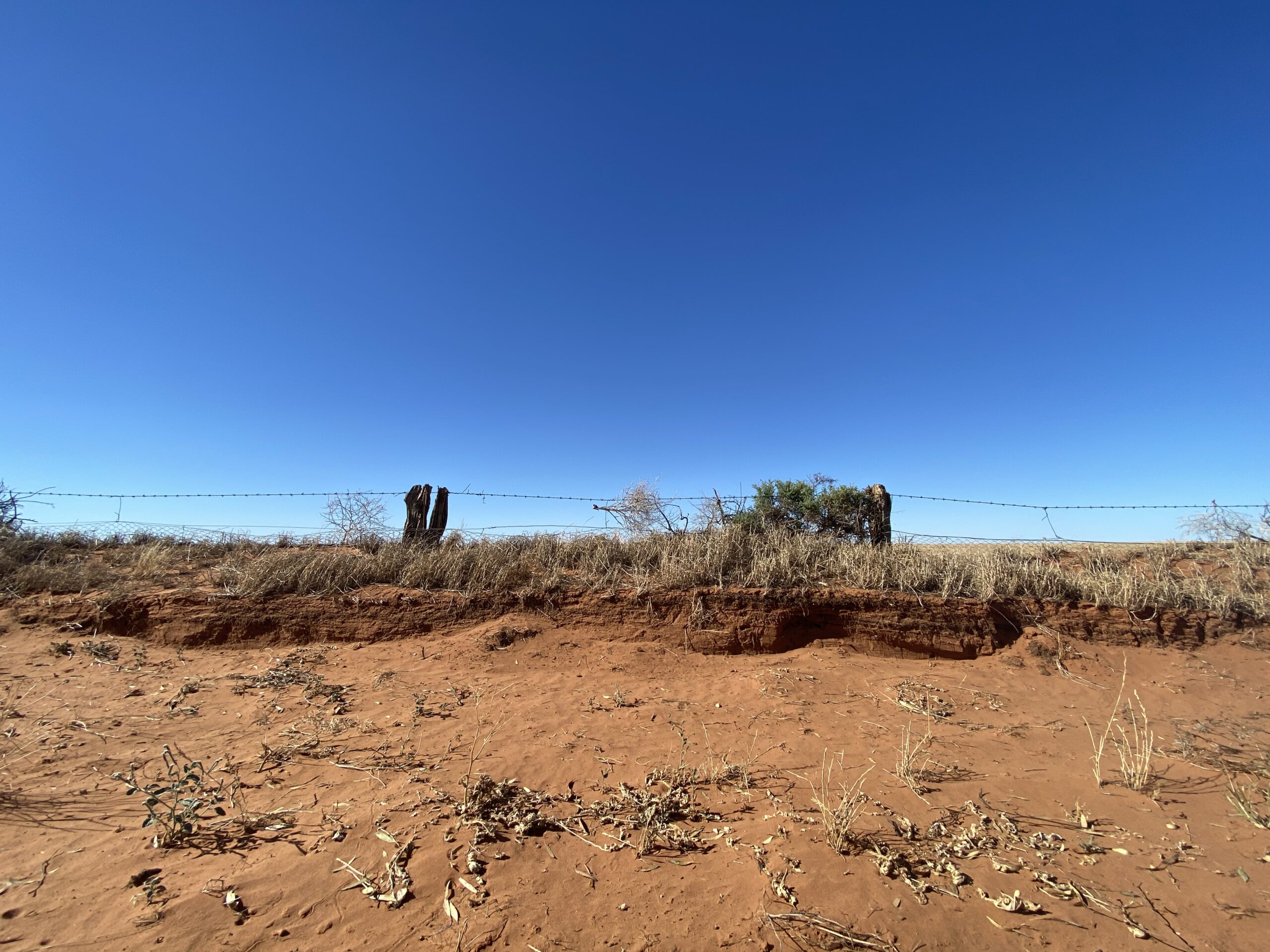
You’re trudging across water depleted landscapes, managing hungry stock that are worth stuff all; fronting up to off farm work we may not love; trying to keep the kids protected from the worst of it; mentally propping up people around us; trying to contribute to the communities where we live, because someone’s always doing it worse than you are; and generally trying to keep things rolling, you just focus on the turn of the weather cycle. You just need to get through it. And then one day, it rains, and recovery starts, and life goes back to ‘normal.
Without reflection, however, I think we miss an opportunity to learn.
Like many things in life, drought is a mixed blessing, and while hard, it is also a valuable opportunity to imagine community life in a way perhaps not considered before and, along with a solid dose of radical acceptance, enables communities or regions to evolve in a way that was not possible before.
If we take a moment to breathe and to ’go back there,’ I am convinced there is a deep richness and positivity in the learning, growth, change and genuine resilience (like, in the actual proper use of that term, not the overused buzzword) that emerges from the disruption that drought causes in community and personal life.
This month has marked a really important milestone at FRRR, one where we have been doing some of that reflection.
After eight sustained years of work, we have just released our insights and learnings from the Tackling Tough Times Together, our long running grant program that supported communities to respond to the community level changes of drought, and the slow recovery period that follows. So, alongside reflecting on what $18.6 million worth of in-drought community investment in 681 projects across eight years really means – yes, 681 different community level responses to drought conditions across Australia – this theme of growth and renewal through disruption continues to surface, over and over again.
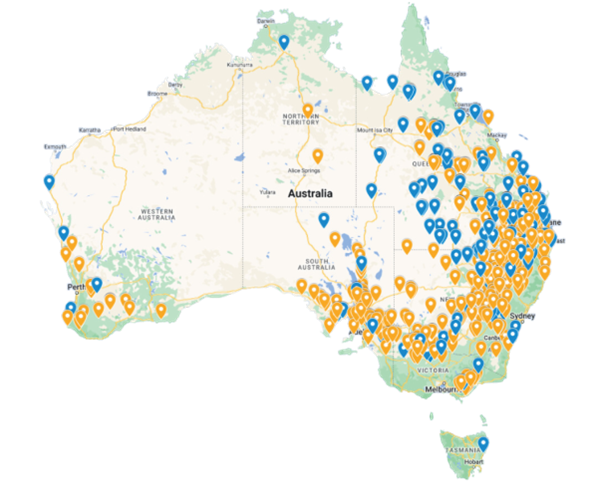
From Buloke in Victoria, to Orroroo in the mid north of SA, or the far west of NSW; communities responded to drought in hugely divergent ways, but growth and renewal have been the central theme.
We all recognise by now that Australia’s landscapes are no stranger to the harsh realities of drought. For remote, rural, and regional communities, these dry spells are more than just weather patterns—they are profound challenges that impact every facet of life. The drought’s effects ripple through the economy, the environment and, most importantly, the social fabric of the communities where we choose to live.
Beginning in 2014, FRRR’s TTTT program offered support to local not-for-profit organisations in these drought-impacted areas to help these communities not just survive but thrive through these tough times. And what a journey it has been…
Through it all, bringing people together during difficult times was absolutely critical. As FRRR’s CEO Natalie Egleton eloquently put it way back in 2017,
“Social cohesion is literally the glue that binds these communities. When adversity strikes, it can easily be reprioritised, especially if it is costly or does not respond to the local context.”
That comment perfectly encapsulates the heart of the TTTT program’s purpose: maintaining social connection and support during immense challenges, in a way that is relevant and accessible, and ideally led by local people and communities.
TTTT was not just about immediate relief – it was, and remains, about creating long-term, sustainable change in places where, often, many other funders do not reach.
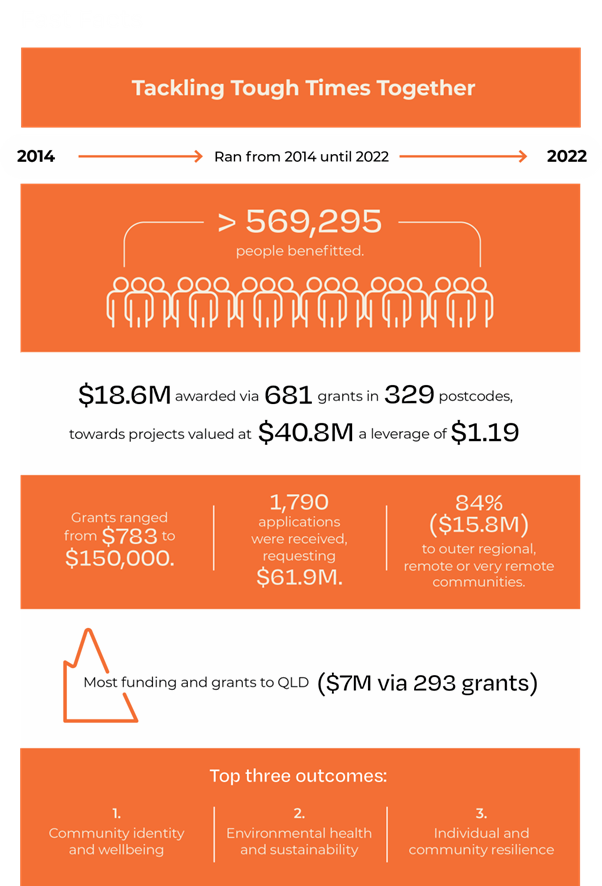
A Brief History of the TTTT Program
The TTTT program was born out of necessity in 2014 when FRRR (Foundation for Rural & Regional Renewal) and Tim Fairfax Family Foundation recognised the pressing need to support community groups in Queensland and northern NSW facing severe drought conditions. The initial focus was on fostering social cohesion, leadership development and skill-building within these communities. With generous contributions from philanthropic donors, including The Yulgilbar Foundation the program launched with ten rounds of funding.
As the drought’s reach expanded beyond Queensland and northern NSW in 2018, the program evolved. The Australian Government stepped in with a substantial commitment of $15 million over five years. This expansion shifted the program’s focus to address issues such as volunteer fatigue, building the capacity and capability of not-for-profits, educational participation for young people, and economic recovery or renewal.
By the time of its final round in May 2022, TTTT had awarded $18.6 million through 681 grants. These grants were crucial in mitigating the extreme impacts of drought and supporting community vitality right across remote, rural and regional Australia. The program has provided a lifeline to outer regional, remote, and very remote communities (where 84% of the overall investment was directed), and in total benefiting nearly 570,000 people across 329 postcodes.
Impact and Outcomes
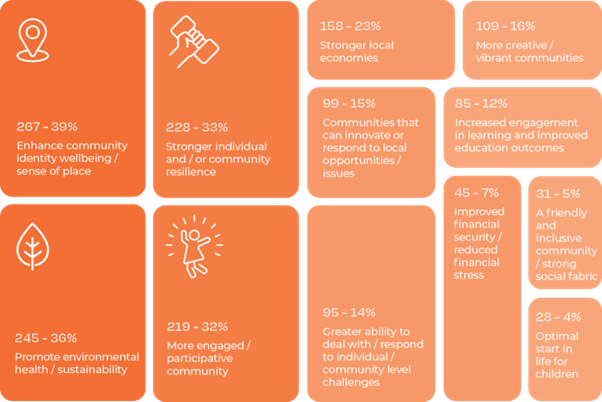
In short; the TTTT investment has proven its ability to boost human and social capital. Locally based not-for-profits have used these funds to foster confidence, creativity and positivity. These elements are vital in enhancing community quality of life and instilling hope for the future.
Over the past two years, FRRR staff, and our partners at JAW Communications and Nance Haxton (The Wandering Journo) have embarked upon the ambitious task of reviewing the final project reports, crunching the metrics, and capturing community insights through videos, case studies, and podcasts.
All are a testament to the program’s effectiveness.
As important, are the stories of impact.
As Gill, a volunteer from the Better in Blackall Festival, (QLD) noted:
After seven years of relentless drought, the community around Blackall in central western Queensland was struggling. As long-time local Gill Russell remembers,
“It was not just us. (the drought) It was very regional, it was statewide. The pastoral and agricultural industry had been brought to its knees. Everyone emotionally and physically was very drained. Because unfortunately if it is dry and the agricultural industry is having a hard time, that also comes across into the community, the town, the shops,” Gill explains. So, what else to do but start a celebration festival showcasing what the region had to offer. Gill is now the President of the Better in Blackall Festival, which brings together locals from near and far for cabaret, concerts and billy kart races. Starting the festival was an important turning point and Gill says it would not have got off the ground without FRRR’s support.”
Indirectly, the program’s support for infrastructure projects has also strengthened the conditions for long-term community vitality. Investments in practical upgrades and infrastructure have proven critical, especially for small communities with limited fundraising abilities. Safe, welcoming spaces for people to gather have been essential in maintaining the connections that underpin social cohesion and support.
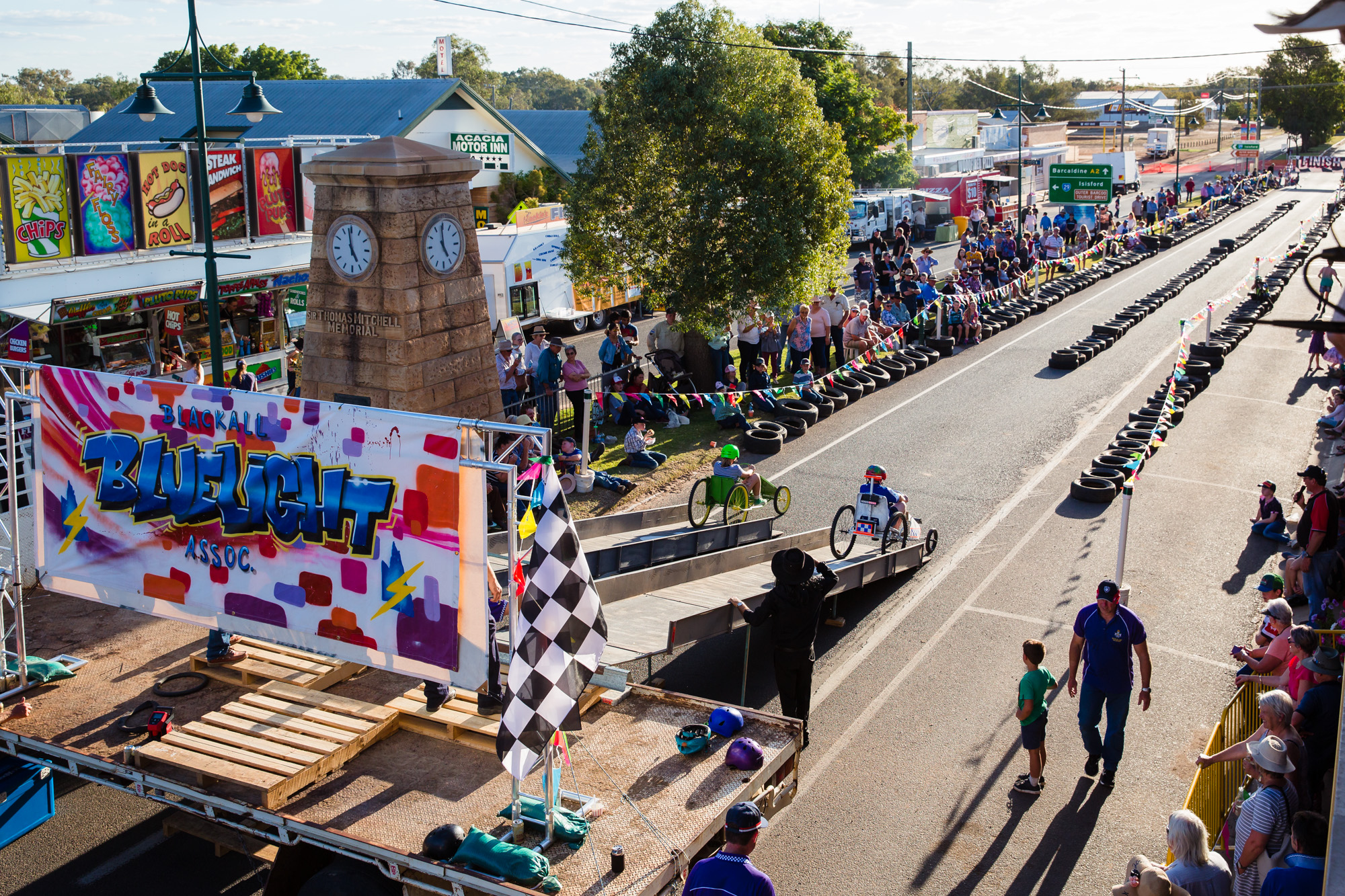
According to Jan Ferguson OAM, Secretary of the Beltana Progress Association, thanks to investment in people and infrastructure, the historic town has become known as a much-loved place for musos to perform on the Festival of Small Halls Folk Circuit. Originally built in 1879, the Beltana Hall is believed to be the oldest galvanised iron hall still in use in Australia. Townspeople patiently spent six years renovating the Hall, with FRRR funding enabling them to remove 20 tonnes of rubble from the cellar. This became a gallery displaying 250 Flinders Ranges paintings bequeathed to the Association, now a popular tourist attraction.
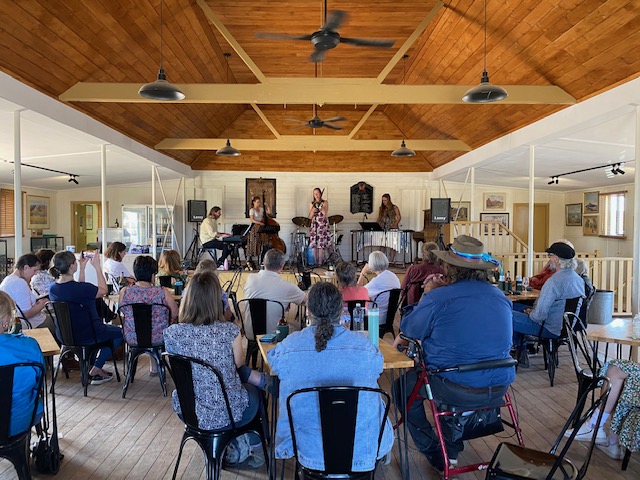
“A lot of drought funding in the past has gone to the agricultural industry, whereas this time there was actually space for communities to join, and that was really, really valuable,” Jan says.
“We did a new strategic plan for the town and the hall was one of the fundamental parts of that, that we needed a good meeting place. The drought funding enabled us to do the social things that were really important in restoring the hall, but it also kept our tradies going. That is essential because if you do not maintain the vibrancy of your community, then it gets really tough.”
She says the funding also brought unexpected benefits. “Since we did all of this, the road into the town’s been sealed by the government. So, the whole profile of the town has changed as we have demonstrated we can do things – and we are doing things.”
The TTTT funding also enabled them to establish a new bore water supply, which in turn led to more tourists as caravaners could stay.
Key Insights and Findings
Overall, The TTTT program’s impact is evident in several key outcomes:
- 39% of the funding enhanced community wellbeing and identity.
- 36% supported environmental health and sustainability.
- 33% focused on building individual and community resilience.
- 32% contributed to more engaged communities.
- 23% bolstered local economies.
The feedback from more than 600 grant recipients highlights the necessity of long-term investment in social and human capital during drought periods. This investment helps offset the challenges posed by drought and supports communities throughout the entire cycle of adversity.
One crucial finding is the importance of resourcing locally based not-for-profit organisations. It might seem obvious, but these organisations play a pivotal role during droughts, and strengthening their capacity has profound community wide impacts. It promotes confidence, creativity, and positivity, leading to improved quality of life and hope for the future.
Additionally, supporting community-driven economic stimulation and diversification has shown to pay dividends well beyond the drought. Stronger local economies lead to more socially participative and engaged communities, enhancing both financial security and community cohesion.
Investment in social and professional networks is equally critical. The TTTT program has been instrumental in strengthening these networks, which are essential for both current drought resilience and future preparedness.
Philanthropic Funding: A Powerful Catalyst
Philanthropic funding has proven to be a powerful activator. Initially backed by philanthropic capital, the TTTT program addressed funding gaps for drought-affected communities and demonstrated a successful model of support. As the program’s effectiveness became evident, other partners joined in, further amplifying its reach and impact.
Today, the TTTT program remains a unique and vital mechanism in Australia’s funding landscape. Its ability to support remote, rural, and regional communities over time, with a depth and ease of accessibility that other funding sources often lack, underscores its significance.
As we look back on the journey of the TTTT program, it is clear that the path to resilience and recovery is paved with community spirit, support and solidarity. The program has not only provided immediate relief but has also fostered long-term growth and sustainability in some of Australia’s most challenging environmental conditions.
This is best demonstrated through projects like Moorambilla Voices. When townships were wondering how they could survive during a decade of drought, Moorambilla Voices – a musical ensemble comprising children from primary age through to high school – was exposed to and created world class arts programs, giving hope when there was little left.
Through TTTT funding, three Mentor positions were funded to support Moorambilla Voices over three years. Annie Berrell acted as Ensemble Manager for 18 years. She says the sense of purpose and joy at a time of such extreme hardship was important not only for the children taking part, but for the parents and carers, extended families and wider community as well.
Founder and artistic director Michelle Leonard said, “Instead of feeling that they have missed out because they grew up in a regional or remote area, they actually realise that they’ve had this enormous advantage and that ability to see things from a variety of perspectives and the interconnectedness of a community stands you in such great stead.” Many of the songs that Moorambilla Voices sing feature Indigenous languages, something Michelle describes as “the beating heart of what we do.”
Moorambilla Voices is now so successful some of its programs are now woven into the New South Wales curriculum and the high school choir performed at the Sydney Opera House last year.

So many stories, and just so much deep impact.
In closing, a word of thanks…
It is important to note that I stand in a circle of strong, and very capable women here at FRRR who have worked very diligently within the TTTT program over the last eight years, and this award is testament to their work, commitment and deep belief in the importance of this work.
Here is to the continued strength, resilience and growth through disruption in our communities, and to the incredible work of organisations and individuals who make a difference every day.
Please take a moment to:
- Read the full Impact Report
- Listen to the series of 10 podcasts
- Watch the series of 10 videos

